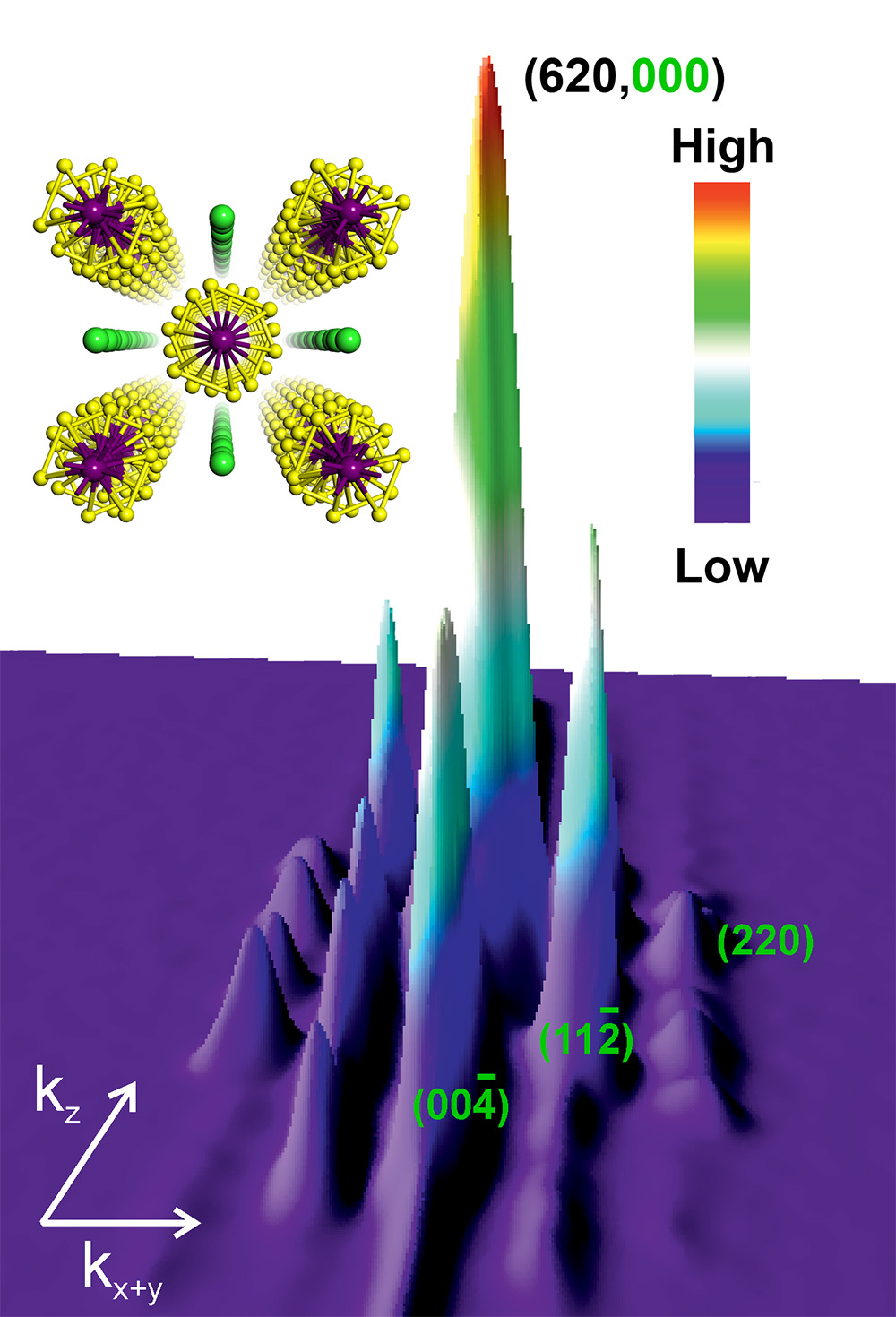(TaSe4)2I: A charge-density-wave topological semimetal
Date:18-01-2021 Print
Although the novel properties in 3D Weyl semimetals, such as topological surface Fermi arcs and chiral anomaly, are very interesting from the perspective of single-particle physics, researchers have also proposed more exotic response effects in Weyl semimetals with significant electron-electron interactions. An axion insulator has topological magnetoelectric (TME) effect θ E·B (E and B are electromagnetic fields), which is predicted to arise from the formation of a charge-density wave (CDW) in a correlated Weyl semimetal by Profs. Zhong Wang and S.C. Zhang in 2013 [1]. Although there has been substantial recent interest in measuring axionic response effects, the relative dearth of candidate Weyl semimetals with interacting instabilities has hindered the confirmation of these theoretical proposals.
Very recently, an international team of Prof. Zhijun Wang (Institute of Physics, Chinese Academy of Sciences) and Prof. B. Andrei Bernevig (Princeton University) has discovered that (TaSe4)2I is the first known material to host a correlation-driven Weyl semimetal-insulator phase transition. They demonstrate that the room-temperature phase of (TaSe4)2I is a Weyl semimetal. Below the CDW transition temperature (TC = 248 K), It hosts an established charge-density wave instability. The correlation-driven topological phase transition in (TaSe4)2I provides a route towards observing condensed-matter realizations of axion electrodynamics in the gapped regime.
In the work published in Nature Physics [2], their first-principle calculations indicate that it is a Weyl semimetal with 24 pairs of Weyl nodes at room temperature. Due to the chiral symmetry of the crystals [Fig. 1], it hosts WPs with opposite chiral charges at different energies and therefore provides a promising platform for the observation of bulk probes of topological chirality. The net +16 chiral charge of the WPs below EF in (TaSe4)2I is the largest value thus far predicted in a real material. They then performed XRD experiments on single-crystal (TaSe4)2I samples to infer the CDW modulation vectors and amplitude from satellite reflections, as shown in Fig. 1. In the calculation of bare electronic susceptibility, they conclude that the observed CDW modulation basis vectors are related to the nesting vectors between the Fermi-surface WPs with opposite chiral charges. In addition, the CDW gap has been further confirmed in the ARPES probes. Furthermore, the transport experiments performed by the group of Prof. Claudia Felser in the Max Planck Institute for Chemical Physics of Solids in Dresden show the angular dependence of the magnetoconductance, which is consistent with the anomalous transport of an axionic charge-density wave in (TaSe4)2I [3].
This work [2] is done by the group of scientists at the Max Planck Institute for Chemical Physics of Solids in Dresden, ShanghaiTech University, Princeton Univeristy, the Max Planck Institute for Microstructure Physics, Halle (Saale), Oxford University, Tsinghua University and the Institute of Physics, CAS. Dr. Wujun Shi, Dr. Benjamin J. Wieder and Dr. Holger L. Meyerheim contributed equally to this work. The work was supported by the National Natural Science Foundation of China, the Strategic Priority Research Program of the Chinese Academy of Sciences and the Center for Materials Genome.
References:
1. Wang, Z. & Zhang, S.-C. Chiral anomaly, charge density waves, and axion strings from Weyl semimetals. Phys. Rev. B 87, 161107 (2013).
2. Shi, W., Wieder, B.J., Meyerheim, H.L. et al. A charge-density-wave topological semimetal. Nat. Phys. (2021). https://doi.org/10.1038/s41567-020-01104-z
3. Gooth, J. et al. Axionic charge-density wave in the Weyl semimetal (TaSe4)2I. Nature 575, 315–319 (2019).

Fig. 1. X-ray diffraction intensities recorded in the vicinity of the (620) reflection of the charge-density-wave (CDW) phase of the topological semimetal (TaSe4)2I. The inset shows its quasi-one-dimensional structure.


